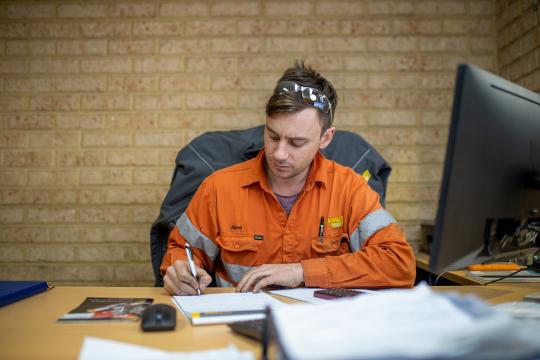
Grant funding could provide your small business with an opportunity to invest in new equipment or projects, launch a new product or service or expand your operations. With many business grants being competitive, it’s good to know how to give your application a competitive advantage.
If you’re looking for ways to finance your business growth, grant funding could make a big difference to your success. Anne Furey from grant application service provider GrantSmart shares her expert tips for grant application success.
Are grants a good way to support your business?

According to Anne, there are hundreds of grants available across Australia, starting from $100, that are designed to support a range of businesses and organisations.
“Most grant programs are quite specific in what they are seeking to fund,” says Anne. “They might be focussed on a particular sector like tourism, agri-food, manufacturing, defence, oil and gas, or focussed on activities such innovation, jobs growth and supporting Indigenous business growth, which can apply across multiple sectors.”
By ensuring the grant is right for your business and preparing a competitive application, you can give yourself the best chance to secure this additional financial support for your business. Anne advises there are ten things business owners should do when considering grants.
1. Check your eligibility
“If you’re looking for grant funding, start by making sure your business is eligible. Check that the type of activities for which you are seeking funding are eligible, and that the type of expenses you want the funding to support are eligible.”
Applying for a grant for which you are ineligible uses up resources that you can direct elsewhere to assist your business.
2. Read the guidelines carefully
In addition to eligibility, Anne recommends checking the grant program’s specific objectives and outcomes to make sure you can deliver what they need.
“The government are looking for applications and projects that help them meet their own objectives and outcomes. If the objectives or outcomes include an environmental outcome like carbon reduction, or reduced waste, then your proposed funded project will need to clearly demonstrate that it meets this objective or outcomes.”
3. Quantify your outcomes or benefits
“If your proposed project will create 10 jobs, state that you are creating 10 jobs. If you will remove 10 tonnes of plastic from landfill each year, state that – or if your project will deliver revenue growth of 20 per cent year on year, say that. One of the main ways that the funding assessors can compare your application and its return on investment against other applications is by looking at the quantified benefits.”
4. Read the assessment criteria carefully
“Make sure you provide appropriate and relevant responses to answer the assessment criteria,” says Anne. “Read the questions carefully and make sure your response is answering the question or the bullet points listed under the criteria, and that it makes sense. Try not to expand into areas that are not related to the questions.”
5. Make sure your application includes all the details needed
“Everything you want the assessor to know should be included in the assessment or merit criteria. You can refer to supporting attachments, but don’t just say ‘see attached.’ Answer the question, quantify, and qualify your responses. You can use bullet points to answer it to be clear and more concise and stay within the word limits.”
6. Avoid industry jargon and general claims
“Don’t assume the assessor knows about your industry, your business or the acronyms you are using. Make sure you expand the first time you are using an acronym.”
“If you’re making claims about your project such as how innovative your tech is, or how competitive your product is compared to others, try to use supportable evidence such as referring to your competitors, including an attachment or referring to a journal paper.”
7. Give yourself plenty of time
Anne wants small business owners to know that preparing and lodging grant applications can take longer than you think. “It’s a big mistake trying to rush your application. It will show in the presentation of the application, and you run the risk of missing deadlines. Supporting information such as financial statements, accountant declarations or letters of support take longer than you might think because you are relying on third parties.”
8. Understand the timelines involved
“Many applicants also do not realise that the assessment process can take several months, and in most cases, they cannot start their project or incur any expenditure until they are advised they are successful, and a funding agreement is signed. So, make sure your timelines are aligned with this assessment process.”
9. Know what happens next
Anne notes that the grant guidelines will usually outline the processes of assessment and the funding agreement. “Typically, once your application is lodged it will take anywhere from six weeks to several months to get the final decision. Remember, they could be reviewing dozens if not hundreds of applications.”
In Anne’s experience, successful and unsuccessful applicants are usually advised in writing by email, with successful applicants given information as to what will happen next.
“The finalisation of a funding agreement typically takes two to four weeks, and from this point most applicants can start their project and incur expenditure.”
“In most cases, you will need to submit regular reports and acquit your expenditure. This can be as simple as submitting evidence of payment of the invoices, to a full project expenditure audit, depending on the funding program.”
10. Ask for help if you need it
Anne recommends getting help if you need it to help you make the most of grant funding opportunities.
“You can contact the funding agency, with contact details typically included in the guidelines, or the SBDC may be able to answer questions. In some cases, the funding agency will run online or in-person information sessions which can be very helpful.”
How to explore grant opportunities for your business
“The best place to look for grants is Business.gov.au with all state and federal grants listed. If you are looking for local government grants, check your local government website.”
“You can also subscribe to the Business.gov.au newsletter which will keep you updated with major programs and sign up for relevant department or ministerial announcements.”
It’s also important to know that information about government grants is free of charge and available to all businesses.
“Some websites and organisations will do grant research for you; however, they do charge up to around $5000 or more and this information can be quickly out of date. It’s easier and quicker to do this research yourself.”
Find out more
To learn more about grant funding:
- Read Government grants – your questions answered for answers to some of the most common questions our SBDC team receives from business owners here in WA.
- Check if there are any grants administered by the SBDC and other parties listed on our website.
- Learn about other ways of securing finance including business finance and loans.
Remember, while grants may be available, there is also free government assistance for small businesses delivered in the form of free or low-cost advisory services, information or guidance. Explore our services to discover how we support small businesses.




